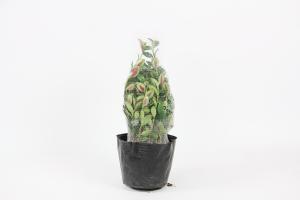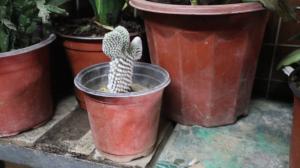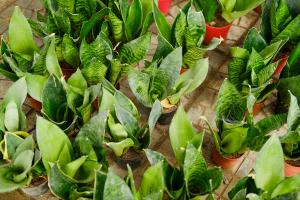Introduction
Tomato plants are a popular choice for gardeners due to their versatility in the kitchen and their ease of growth. However, many gardeners are unsure about the watering requirements for their tomato plants. Should you let tomato plants dry out completely before watering, or should you keep them consistently moist? This article will explore the benefits and drawbacks of both options, and help you to decide what is best for your tomato plants.
The Case for Letting Tomato Plants Dry Out
One argument for letting tomato plants dry out is that it can encourage deeper root growth. When the soil becomes dry, the plant’s roots are forced to grow deeper in search of water. This can result in a stronger, more robust root system that is better able to support the plant’s growth and health.
Additionally, allowing the soil to dry between waterings can help to prevent the growth of disease-causing fungi and bacteria. These pathogens thrive in moist conditions, so by limiting the amount of moisture in the soil you can reduce the risk of your plants becoming infected.
The Case Against Letting Tomato Plants Dry Out
On the other hand, some gardeners argue that tomato plants should never be allowed to dry out completely. If the soil gets too dry, the plant can experience stress and become less productive. Additionally, excessive stress on the plant can make it more susceptible to disease and pest infestations, which can be difficult to treat.
Furthermore, allowing the soil to dry out completely can result in physiological changes in the plant, such as blossom-end rot. This condition is caused by a calcium deficiency that can occur when the plant experiences fluctuations in moisture levels. By keeping the soil consistently moist, you can prevent this condition from occurring and ensure a healthy crop of tomatoes.
What You Should Do
So, should you let your tomato plants dry out or keep them constantly moist? The answer is that it depends on your specific growing conditions and your personal preferences as a gardener.
If you live in a hot, dry climate with sandy soil that drains quickly, it may be beneficial to let your tomato plants dry out between waterings. However, if you live in a cooler climate with heavy clay soil that retains moisture, you may need to water your plants more frequently to prevent them from becoming waterlogged.
Ultimately, the key is to pay close attention to your plants and monitor the moisture level of the soil. Stick your finger into the soil – if it feels dry to the touch, it’s time to water. If it feels moist, you can wait a little longer before watering.
Conclusion
In conclusion, the decision to let your tomato plants dry out or keep them consistently moist is a personal one that should be based on your individual growing conditions and preferences. By taking the time to monitor your plants and adjust your watering routine as needed, you can ensure a healthy and productive crop of tomatoes.

 how many times do yo...
how many times do yo... how many planted tre...
how many planted tre... how many pine trees ...
how many pine trees ... how many pecan trees...
how many pecan trees... how many plants comp...
how many plants comp... how many plants can ...
how many plants can ... how many plants and ...
how many plants and ... how many pepper plan...
how many pepper plan...































